If you’ve struggled with IT band syndrome like me, you know how frustrating and painful it can be. This condition often affects runners, sidelining them with outer knee pain that just won’t go away. Fortunately, modern running shoe technology has come a long way. Brands now design footwear specifically to address biomechanical issues like overpronation and lateral knee stress—two major contributors to ITBS.
Choosing the right shoe can ease pressure on the IT band, reduce knee strain, and support your gait so you can run longer and recover faster. The shoes listed here were selected because they offer superior stability, cushioning, and structural guidance—all qualities runners with ITBS need.
Whether you’re returning from injury or trying to prevent flare-ups, the right footwear is essential. Below you’ll find a summary table to help compare specs at a glance, followed by detailed reviews of each model.
Summary of Best Shoes for IT Band Recovery
Shoe Model | Stability Type | Drop | Weight (Men’s US 9) | Price |
|---|---|---|---|---|
Asics Gel-Kayano 31 | High Stability | 10 mm | 10.7 oz | |
Brooks Adrenaline GTS 24 | Moderate Stability | 12 mm | 10.0 oz | |
Hoka Arahi 7 | Mild Stability | 5 mm | 9.9 oz | |
Saucony Guide 18 | Moderate Stability | 8 mm | 9.3 oz | |
New Balance Fresh Foam X 860v14 | Moderate Stability | 10 mm | 10.9 oz |
Reviews of Recommended Best Shoes for IT Band Recovery
Here are our reviews of the recommended running shoes for IT band syndrome recovery:
Asics Gel-Kayano 31
Best for: Maximum stability and heel-striking runners with IT band pain
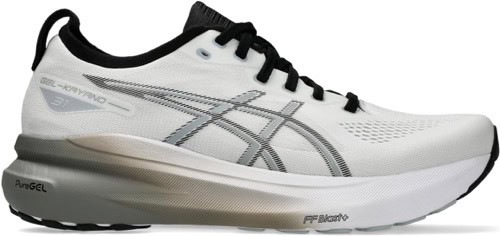
The Gel-Kayano 31 continues Asics’ tradition of reliable, durable support for runners who overpronate or need a guiding ride. The 4D Guidance System provides structure to reduce lateral motion, while the FF Blast+ Eco cushioning and rearfoot PureGEL reduce impact on your knee and hips. It’s a solid choice if your IT band flares up with long mileage or downhill running. Runners who need consistent support and have a heel-strike pattern will benefit most. The cushioning is soft yet resilient, and it doesn’t compress excessively over time, making it a top-tier stability trainer that promotes healthy biomechanics.
Specs
- Stability Type: High Stability
- Heel-to-Toe Drop: 10 mm
- Weight: 10.7 oz (303 g)
- Release Date: June 2024
Pros
- Excellent shock absorption with PureGEL
- Durable and structured 4D Guidance System
- Eco-conscious FF Blast+ cushioning
Cons
- Heavier than other stability shoes
- Can feel too corrective for neutral runners
Men’s version | Women’s version
Brooks Adrenaline GTS 24
Best for: Runners needing moderate knee support and smoother transitions
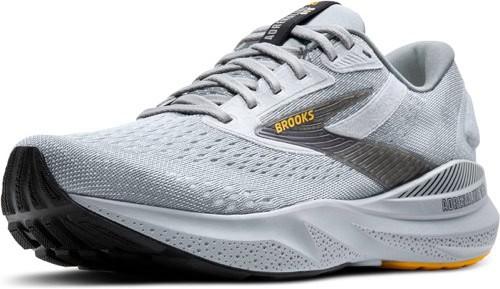
The Brooks Adrenaline GTS 24 enhances its reputation as a daily trainer with GuideRails technology that stabilizes knee movement—a major advantage for ITBS recovery. The latest version updates the midsole with lighter, more responsive DNA LOFT v3 cushioning, reducing joint stress while keeping your stride fluid. It’s ideal for moderate overpronators or those transitioning back into running after an injury. The shoe has a plush feel but retains enough responsiveness for tempo runs. The GTS 24 remains one of the most forgiving and supportive trainers in the market.
Specs:
- Stability Type: Moderate Stability
- Heel-to-Toe Drop: 12 mm
- Weight: 10.0 oz (284 g)
- Release Date: November 1, 2024
Pros
- GuideRails reduce lateral knee strain
- Responsive DNA LOFT v3 midsole
- Great for daily training
Cons
- High drop not ideal for forefoot strikers
- Slightly bulky upper
Men’s version | Women’s version
Hoka Arahi 7
Best for: Lightweight stability for mild overpronators
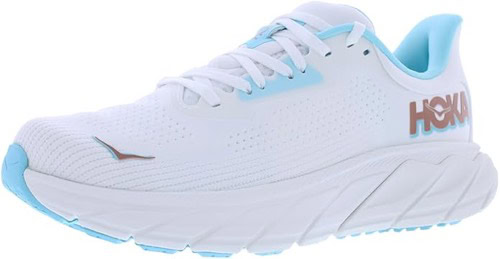
The Hoka Arahi 7 offers a lightweight option that still provides meaningful support through its J-Frame system. This makes it a favorite among runners who prefer a softer feel but still require help with mild overpronation. The shoe features a wide platform and rocker geometry that guides your gait forward without aggressive correction. Ideal for runners with IT band syndrome who don’t need maximal control but benefit from some guidance. It’s also a solid choice for midfoot or forefoot strikers who want a shoe that doesn’t slow them down.
Specs
- Stability Type: Mild Stability
- Heel-to-Toe Drop: 5 mm
- Weight: 9.9 oz (280 g)
- Release Date: January 2024
Pros
- Low weight, high support
- Wide platform increases lateral control
- Comfortable fit for long runs
Cons
- Lower drop may not suit heel strikers
- Less plush than typical Hoka models
Men’s version | Women’s version
Saucony Guide 18
Best for: Runners who want structure without stiffness
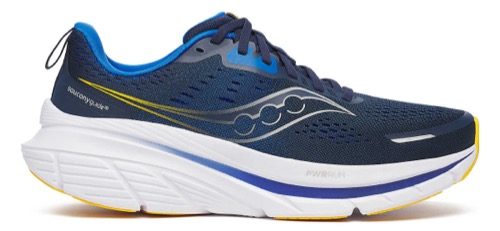
Released in early 2025, the Guide 18 improves on its predecessor with more flexible cushioning and a roomier toe box. It’s a stable everyday trainer with just the right amount of firmness to keep your foot in line without forcing it. The PWRRUN foam is smooth underfoot, and the new Hollow-Tech support frame subtly guides pronation. It’s perfect for runners dealing with ITBS from mild to moderate misalignment who still want a versatile and lightweight feel on their runs.
Specs
- Stability Type: Moderate Stability
- Heel-to-Toe Drop: 8 mm
- Weight: 9.3 oz (264 g)
- Release Date: February 2025
Pros
- Improved PWRRUN cushioning
- Balanced support and flexibility
- Wider forefoot for comfort
Cons
- Support may not be enough for severe overpronators
- New foam may feel too soft for speedwork
Men’s version | Women’s version
New Balance Fresh Foam X 860v14
Best for: Reliable motion control and soft ride for IT band recovery
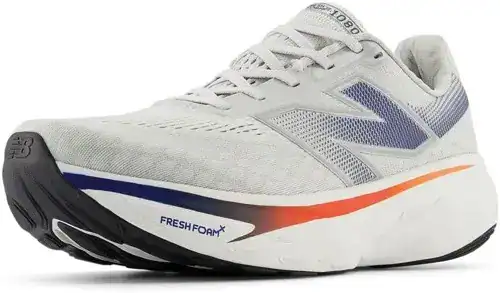
The 860v14 is the newest iteration in New Balance’s flagship stability line and brings a more sculpted fit and plush ride to runners who need solid motion control. The Fresh Foam X midsole offers a cloud-like feel without losing responsiveness. The medial post is more refined, delivering smoother guidance during footstrike. It’s ideal for runners returning from an IT band flare-up who need dependable support without harsh correction. The v14 also has an improved upper for breathability and lockdown, especially important on hot training days.
Specs
- Stability Type: Moderate Stability
- Heel-to-Toe Drop: 10 mm
- Weight: 10.9 oz (309 g)
- Release Date: May 2025
Pros
- Softer Fresh Foam X update
- Redesigned medial post for support
- Ideal for long-distance comfort
Cons
- Bulkier feel than competitors
- Upper runs warm in hot weather